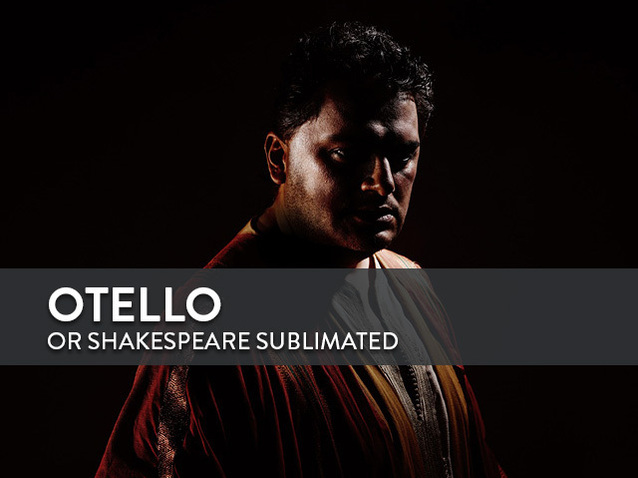 © DR
© DR
Composed after 15 years of silence, Otello is the result of an unlikely collaboration between renowned composer Verdi when he was 75 years old, and the young librettist Arrigo Boito when he adapted Shakespeare’s famous Othello – in a libretto focusing on Iago’s machinations as he tries to trap Otello and Desdemona. We take a look at the “powerfully tragic work, of searing intensity”.
***
Despite its immense fame, Otello has never been a popular opera, like Nabucco or La Traviata.Undoubtedly because the writing style favoured by Verdi deviates too much from what the public considers as his work.Grand arias that immediately capture the audience’s enthusiasm give way to a renewed conception, entirely at the service of a character full of contrasts who feigns a moving fragility behind the blindness and temperamental outbursts of an impulsive nature. Otello, which could be called the role of roles, requires of any tenor the ability to cover a broad range of expressions; he must be able to go from the assurance of the victor to loving, sensual sweetness only to give himself over to jealous meanderings without ever dimming the contrasts that go “from wrath to the terrible calm of irony” as Verdi put it.
Whereas the maestro seemed to have permanently left the lyric stage behind, his providential meeting with librettist and composer Arrigo Boito enabled him to prove wrong those who saw him only as a conservative who had lost the inspiration necessary to withstand the Wagnerian tidal wave.The staging of Otello on 5 February 1887 at Milan’s La Scala was an international event that met the expectations raised by the return to opera of the greatest living opera composer.For the first time, Verdi had an exceptional librettist, Arrigo Boito.His vast literary knowledge enabled him to adapt Shakespeare’s famous Othello with great effectiveness. Going from Othello to Otello was the culmination of a long process of dramatic and lyrical maturation, every step of which is described in the correspondence exchanged between Verdi and Boito.
Code name:“Chocolate”
It was at a time in his life when one might have thought that Giuseppe Verdi would decide to withdraw into himself that he in fact decided to undertake the composition of Otello, his twenty-seventh opera.At the age of 70, he may have given the impression of having finally stopped wondering about the future of Italian opera.In 1871, after the huge success of Aïda, he had even announced his retirement.This was followed by 15 years of silence.Relative silence, when one thinks that during this period Verdi composed a string quartet, rather unexpected from him, and, the following year in particular, in 1874, his Requiem in memory of Alessandro Manzoni, Italy’s Victor Hugo.Six years of silence followed, until 1880; this was a problem for a composer who had accustomed his audiences to a rapid pace of new creations.Without even counting his furiously paced production during his famous “galley years”, Verdi composed one opera every four years starting with La Forza del Destino (1862). When his loyal friend the countess Maffei pressed him with questions, he answered:“Let’s be serious:why would I write?What good would it do?What would I get out of it?The results would be paltry. I would hear people say from the start that I didn’t know how to write and that I had become Wagner’s epigone!What great glory!After a forty-year career ending up an imitator!”.
But this did not take into account the determination of Giulio Ricordi, grandson of the founder of the renowned musical publishing house, who launched a veritable conspiracy to revive the maestro’s inspiration.Convinced of the possible success of a collaboration between the two men, publisher Ricordi pushed for a reconciliation between Arrigo Boito (1842-1918) and Verdi, who had forgotten none of the virulent attacks the fiery young composer had launched against him!Out of this reconciliation came Verdi’s final two masterpieces, Otello (1887) and Falstaff (1893) with whose success Boito was widely associated.
In 1879, there was discussion of the possibility of adapting Shakespeare’s Othello during a dinner in Milan involving Verdi, his wife Giuseppina, conductor Franco Faccio and Giulio Ricordi.Those present immediately noted the interest Verdi was showing in it.Everyone knew his predilection for Shakespeare, which he had been reading and rereading since adolescence, and whose Macbeth he had already put to music in 1847. Giuseppina Strepponi noted wisely, “Verdi went blindly, without intending to, into the trap.One thing led to another, and from nothing, from a mere word, the glass of friendship in hand, a libretto was born.”The maestro deplored that Rossini had failed to render all the power of Shakespeare’s drama, which came out dull and uninteresting in the opera he created in 1816, Otello, ossia Il moro di Venezia. This work by Rossini really called for another attempt worthy of the flamboyant Shakespeare drama.The day after that dinner, Faccio took Boito to Verdi’s home so they could pursue this interesting conversation.And three days later, Boito submitted an outline to the composer, who concluded:“Put it in verse.That will always be useful to you, to me, and to others”.
In 1880, Ricordi planned to restage Simon Boccanegra at La Scala with an extraordinary cast.Whilst the ageing maestro had given up on the idea of writing a new opera, he did not bid adieu to his past work, which he sought to have performed more widely. Verdi therefore undertook a revision of his work as a way to renew himself, and Ricordi skilfully suggested that he work with Arrigo Boito. This gave rise to a fruitful correspondence between the two men, who ended up becoming close, establishing a real friendship reinforced by their common work they undertook for rework this Simon Boccanegra, created in 1857 and crowned by triumph in its new, 1881 version.But Verdi hesitated going further, even though he told the great baritone Victor Maurel, who was remarkable in the role of Simon Boccanegra:“If God allows me, I will write Iago for you”.Iago is the traitor who leads Othello to his loss by instilling in him the poison of jealousy.
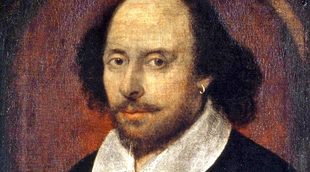
Two Christmases in a row, in 1881 and 1882, Ricordi sent Verdi a panettone on which stood a little chocolate man, an obvious allusion to the colour of the Moor of Venice’s skin, who in Verdi’s correspondence became “the chocolate project”.For years, to keep this project secret, it was referred to only under its code name, “Chocolate”, by both of them.Months of letters were still required before Verdi decided to compose. On 13 February 1883, Richard Wagner died suddenly in Venice.He was born in 1813, as Verdi noted in his journal:“Sad. Sad. Sad. Wagner is dead (…).A great individual has died!A name that leaves a powerful impression on the history of art”.Indeed Don Carlos and especially Aïda had led some to accuse Verdi of “Wagnerism”.The continuous structure of these works, their harmonic richness and huge proportions aroused sharp criticism among those who saw it as an alteration of “Italianness”.
Did Wagner’s death free up something in Verdi?However that may be, the correspondence with Boito intensified, and after the reworking of Don Carlos in Italian, Verdi started writing his new opera, initially entitled Iago.Part of 1884 and almost all of 1885 were required before the score for Otello was finished after a long period of meticulous work.On 1 November, Verdi wrote to Boito: “It’s finished!Glory to us!(and also to him!!!)Goodbye”.
A providential reconciliation
Otello is the result of a very fruitful collaboration between two men who started out hating each other.It seems certain that without Ricordi’s intervention, mothering would have led them to reconcile, which the difference in their ages alone would have made unlikely. “A curious work by a man seeking to be original”:that is how Verdi judged Mefistofele in 1868, the “manifesto opera” by Arrigo Boito. The maestro was unable to understand this young, 26-year-old composer.When he undertook the composition of the only opera he finished, Mefistofele, Boito was a passionate artist of prodigious talent:a poet, he exchanged correspondence with Victor Hugo, whom he admired deeply.He read Goethe, Hoffmann and Baudelaire, as well as Nietzsche and Schopenhauer.As an essayist, literary critic and translator, he became more and more involved in the various reviews, where new artistic concepts were developed in an attempt to break out of the shackles of the “old” art, deemed too academic.This led him to issue a declaration of war against the most venerated Italian composer, Verdi.In 1863, in an “Ode all’arte italiana”, Boito did not hesitate to condemn artists who were “shut away in the jail of old age and cretinism” who go so faras to corrupt art on“an altar soiled like the wall of a brothel!”The intransigent young man made it his mission to get beyond the platitudes of Verdian dramaturgy, subject entirely to action and the expression of feelings.Clearly Verdi, whose aesthetic supremacy was being challenged, did not greatly admire this young upstart.Boito belonged to that group of young Milanese intellectuals known as the “Scapigliati” (“The Wild Ones”).Their ideal was that of the Bohemian life described by Henry Murger in his famous novel, La Vie de Bohème (1851) which inspired, among others, Puccini’s La Bohème (1896).
Arrigo Boito introduced Verdi to the French translation of Shakespeare done by François-Victor Hugo, the son of Victor Hugo.The maestro insisted on remaining absolutely faithful to the text by the English playwright, who crops up repeatedly at essential stages of his creative evolution.Macbeth(1847 and 1865), Otello (1887) and Falstaff (1893) are three works in which Verdi experimented with new dramatic and lyrical solutions to express Shakespeare’s genius.Being faithful to the text did not mean that Boito and Verdi were content to “put to music” a drama intended to be spoken.In their correspondence, one letter from Boito very clearly lays out the issues involved in adapting a play for the opera.“An opera is not a drama; our art lives on elements unknown to the spoken tragedy (…).Eight measures are sufficient to bring to life a feeling; a rhythm can recompose a character. Music is the most powerful of the arts; it has its own logic, a logic that is faster and freer than spoken thought, and much more eloquent.”This involves rendering the spirit of the drama while retaining only the strongest situations, i.e., those that are best suited to rendering the complexity of the characters.Resulting from the perfect meeting between Shakespeare’s drama and Verdi’s music, Otello rises to the heights of Othello.Irish playwright George Bernard Shawwent even further when he declared, paradoxically:
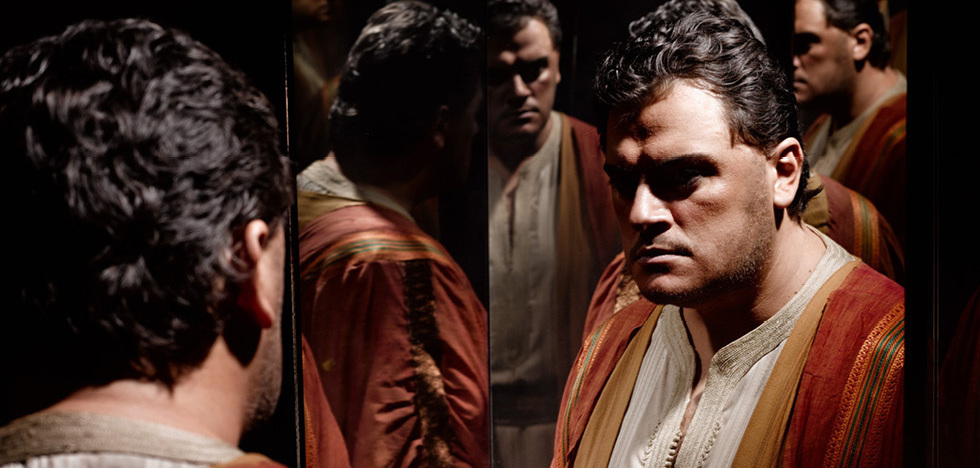
“The truth is that, rather than Otello being an Italian opera written in the style of Shakespeare, it is Othello that is a drama by Shakespeare in the style of Italian opera (…).Desdemona is a prima donna with handkerchief, a confident vocal solo.The role of Othello is magnificent music with plenty of thunderbolts and exciting rhythms.”
In writing his Othello, Shakespeare had picked up the outline of a novella written by an Italian author, Giovan Battista Giraldi Cinthio (1504-1573), entitled The Moor of Venice.The English playwright worked out a very complicated plot and redesigns the main characters so as to better explore the meanderings of the human soul in the context of a sort of three-character bourgeois drama.This structure itself, because of its tightness, lends itself beautifully to becoming an opera by Verdi, as George Bernard Shaw pointed out.Here we find ingredients dear to the musician:a clear, rigorous plot with powerful passions, to which is added the sympathy aroused by the wrenching love affair of Othello and Desdemona.Boito abandoned the first act that Shakespeare had set in Venice in favour of a unity of time and place that brings Otello closer to being a classic tragedy.The conspiracy hatched by Iago takes place on the island of Cyprus.The drama plays out in an enclosed place where the characters have no choice but to confront one another, and no way out other than death. In order to achieve a more perfect tragic sobriety, Boito eliminated all the secondary characters, favouring confrontations between Iago and Othello that punctuate the desperate monologues of the hero, who is gradually overcome by poisonous doubt.Each act ends on a very successfully written scene.Act 1 closes on one of the most beautiful love duets in all the lyric repertoire.Act 2 ends with a diabolical oath between Othello and Iago, who both become potential murderers.Act 3 ends with the Moor blacking out, losing control of himself; this marks the triumph of Iago’s hateful conspiracy.This perfect dramatic construction is accompanied by meticulous writing; Boito contributed special care to the style, using a poetic vocabulary.
Ambiguity of characters and voices
This elegant writing never sinks into gratuitous preciosity, but it always serves the expression of very complex characters whose motivations can be interpreted in different ways.The two male protagonists are marked by a certain ambiguity.It is difficult to reduce Othello to one dimension.He appears first as the glorious vanquisher of the Turks, whose arrival amidst the ruckus of a wild storm serves as the tumultuous overture to the opera. The great war leader is also this “Moor”, this African whose services were engaged by the Republic of Venice, one of whose beautiful women, Desdemona, has decided to take him as her husband.How could the former slave not have doubts about such extraordinary good fortune?Iago’s calumnies are easily able to destabilise this tightly wound man, dazzled by the beauty of the couple he imagined formed by his wife and the overly seductive Cassio.Othello can display greatness and authority, but also brutality and cruelty.Verdi knew that this crushing and terrible tenor role is totally different to those he wrote previously.It requires a performer capable of moving between the central and lower registers of the voice to make perceptible the torments, hesitations and interminable questioning of a hero trapped by jealousy.The role has most often been played by dramatic or even Wagnerian tenors, Torsten Ralf, Ramon Vinay and Jon Vickers. Placido Domingo was able to bring out all of the character’s fragility.
Iago is just as difficult to pigeonhole.Why has he sworn to ruin Othello?Out of disappointment with the one he admired who was not worthy of his trust?Isn’t he just a cynical manipulator who is happy to do evil for evil’s sake?Is the display of happiness completely unbearable to him? Could he only take pleasure in contemplating the “lion” brought down, completely devastated by blind, hateful jealousy?Verdi chose baritone Victor Maurel to play this character when he created the role.That singer had acting talents that later dazzled audiences in the title role of Falstaff. In the 20th century, Tito Gobbi was a diabolical Iago.
Verdi chose Romilda Pantaleoni to play the role of Desdemona; she was known as “La Duse of Song”, indicating what qualities the actress requires to play the character.Desdemona is a dramatic soprano, a sister to Amelia in Bal masqué (1859) or Leonora in La Forza del Destino (1862). Yet Desdemona is supposed to be a very young woman.Her youth fed the suspicions of an older Othello and explains the character’s vulnerability. Desdemona has to sing an almost angelic song in her “Willow Song” and the Ave Maria in the final act.But she has to go toe-to-toe with Othello in the duet “Dio ti giocondi” (Act 3, scene 2) and in the aria “A terra!...Si…nel livido” (Act 3, scene 8) while expressing herself with great dramatic intensity.Desdemona is both the pure angel, the innocent victim without any real defence, and the passionate woman trying to dispel the mirages that Othello sees in his jealousy.In recent decades, Kiri te Kanawa and Mirella Freni were both ideal Desdemonas.
Loss of inspiration or stylistic renewal?
With Otello, Verdi revitalises his lyric language and playwriting by happily working with Shakespeare.We should overlook the excessively cut-and-dried reaction of George Bernard Shaw who, after attending the London premiere of Otello in 1889, declared that Verdi favoured “harmonic elegances and orchestral sonorities” in order to mask his inability to rediscover the inspiration of “La donna è mobile”.
This judgment has persisted to this day, with some people tending to isolate the ageing Verdi of Otello from the triptych of the years 1851-1853 of Rigoletto, Il Trovatore and La Traviata.And yet at the age of 75 Verdi still offered up a powerfully tragic work of astonishing intensity. The character’s passionate outbursts are relayed by the outbursts of an orchestra of deeply harmonic richness.In its dazzling debut, Otello established itself as a true musical drama shaken by fury and tears – a drama which, in 1887, earned the Maestro a memorable triumph at La Scala.That evening there was a young cellist from Parma, Arturo Toscanini, in the pit; he left his indelible mark on the work before leaving an unsurpassed recorded performance.
Catherine Duault
the 22 of September, 2015 | Print

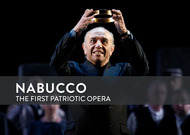
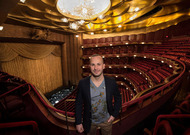
Comments